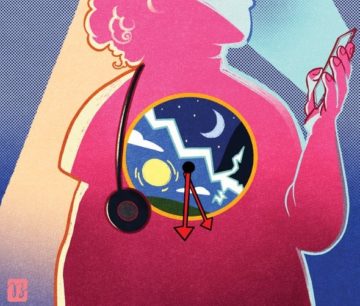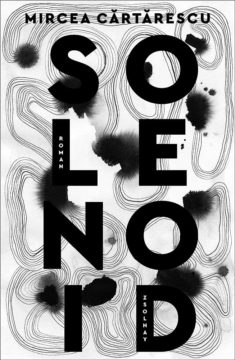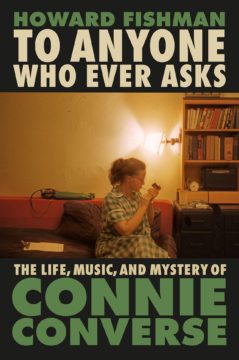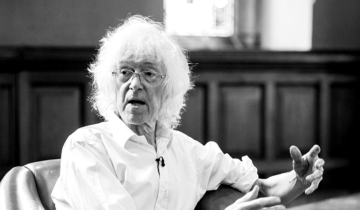Grey Anderson in Sidecar:
There has been a lively debate on the American left about the Biden Administration’s industrial strategy. Discussion has focused on the prospects opened up by the massive stimulus – totalling some $4 trillion, if we factor in the American Rescue Plan, the Bipartisan Infrastructure Law and the CHIPS and Science Act alongside the Inflation Reduction Act – from training up ‘progressive technocrats’ to retrofit buildings to the feasibility of capitalist state-led ‘decarbonization’ under conditions of global overcapacity and falling economic growth.
So far, assessments have been mixed, differentiating ‘the good, the bad, the ugly’, albeit with the stress on the first. If the boost to employment and ‘green’ good works promised by the IRA cannot be dismissed, nor can its shortcomings: lack of funding for housing and public transport, neutered regulatory standards in the electricity sector, leasing agreements that give oil and gas producers access to public land. ‘The IRA’, a representative appraisal in Jacobin reckoned, ‘is at once a massive fossil fuel industry giveaway, a historic but inadequate investment in clean energy, and our best hope for staving off planetary catastrophe’.
In other words, the left critique has gone beyond ‘good, but not big enough’ – but perhaps not very far beyond. Almost entirely absent in these discussions is the geostrategic rationale that powers this national-investment drive, reshoring production on the US mainland, bagging lithium mines and sponsoring construction of microchip factories, in a militarized bid to outflank China.
More here.

 By the middle of the nineteenth century, such signs had become a familiar sight in many parts of Germany. In The Intercepted Love Letter, an 1850s painting by the Munich-based artist Carl Spitzweg, a young man is lowering a secret note from a garret window to his beloved sitting at the window one floor below. On the facade of the house, between the two floors, can be seen the fire mark of the Munich insurer Deutscher Phoenix, which bears a depiction of the mythical bird. Interestingly, the placing of the fire mark must have been a deliberate painterly choice, as such marks were never placed at such a height. Prominently displayed in this unusual location, the sign is perhaps intended to indicate to the viewer the social station of the young woman, who clearly comes from a good (Phoenix-insured) home. But it is also a risk-averse home, one that presumably would not encourage fiery love, love that shuns middle-class calculations about long-term security, financial and otherwise. It has been noted, however, that the pair of doves (read: lovebirds) to the right of the fire mark are presented slightly enlarged, perhaps an indication that, unlike fire, love finally cannot be extinguished. Whichever reading one subscribes to, Spitzweg’s painting figures the fate of love in the age of modern insurance, a history that has yet to be written.
By the middle of the nineteenth century, such signs had become a familiar sight in many parts of Germany. In The Intercepted Love Letter, an 1850s painting by the Munich-based artist Carl Spitzweg, a young man is lowering a secret note from a garret window to his beloved sitting at the window one floor below. On the facade of the house, between the two floors, can be seen the fire mark of the Munich insurer Deutscher Phoenix, which bears a depiction of the mythical bird. Interestingly, the placing of the fire mark must have been a deliberate painterly choice, as such marks were never placed at such a height. Prominently displayed in this unusual location, the sign is perhaps intended to indicate to the viewer the social station of the young woman, who clearly comes from a good (Phoenix-insured) home. But it is also a risk-averse home, one that presumably would not encourage fiery love, love that shuns middle-class calculations about long-term security, financial and otherwise. It has been noted, however, that the pair of doves (read: lovebirds) to the right of the fire mark are presented slightly enlarged, perhaps an indication that, unlike fire, love finally cannot be extinguished. Whichever reading one subscribes to, Spitzweg’s painting figures the fate of love in the age of modern insurance, a history that has yet to be written.
 Y
Y I usually get up by 7 A.M. and am in bed by 10 P.M. I tend to eat meals at the same times of day, too. This may sound a little dull, but it’s essential for my productivity. It’s also a schedule that rarely disrupts my body clock. And a steady clock, it turns out, just might help me and many other people avoid cancer and some other diseases, according to new research.
I usually get up by 7 A.M. and am in bed by 10 P.M. I tend to eat meals at the same times of day, too. This may sound a little dull, but it’s essential for my productivity. It’s also a schedule that rarely disrupts my body clock. And a steady clock, it turns out, just might help me and many other people avoid cancer and some other diseases, according to new research. But this week, like so many of us, I’ve been thinking about the other direction that can apply to that comment about Silicon Valley—what happens when the goal, having achieved so much else, is not extending life, but risking it? Because if placing a bet on living forever is one leisure activity to put your vast wealth toward, another is extreme feats of travel. The rich people of today
But this week, like so many of us, I’ve been thinking about the other direction that can apply to that comment about Silicon Valley—what happens when the goal, having achieved so much else, is not extending life, but risking it? Because if placing a bet on living forever is one leisure activity to put your vast wealth toward, another is extreme feats of travel. The rich people of today  B
B MIRCEA
MIRCEA  CONNIE CONVERSE is remembered now, if at all, as a rediscovered relic of blog-era music oddity. Like Rodriguez, Donnie and Joe Emerson, Sibylle Baier, Lavender Country, or Converse’s near-contemporary and kindred spirit, Molly Drake, the cracks she slipped through became her calling card. Converse was notable for preserving a greater level of obscurity more extreme than any of the others: recordings never commercially available; no connections to any scene or famous figure; being a guitar-playing singer-songwriter (and home-taper) in the early 1950s, before such a thing existed, who played only among friends before dropping out of music in the 1960s and ultimately disappearing shortly after. It was not until the 2000s that some of her work was finally made available for those who were never in a room with her.
CONNIE CONVERSE is remembered now, if at all, as a rediscovered relic of blog-era music oddity. Like Rodriguez, Donnie and Joe Emerson, Sibylle Baier, Lavender Country, or Converse’s near-contemporary and kindred spirit, Molly Drake, the cracks she slipped through became her calling card. Converse was notable for preserving a greater level of obscurity more extreme than any of the others: recordings never commercially available; no connections to any scene or famous figure; being a guitar-playing singer-songwriter (and home-taper) in the early 1950s, before such a thing existed, who played only among friends before dropping out of music in the 1960s and ultimately disappearing shortly after. It was not until the 2000s that some of her work was finally made available for those who were never in a room with her. Except for a painful one-year stint as a high-school teacher of philosophy in his native Romania, Emil Cioran never had a real job. ‘I avoided at any price the humiliation of a career,’ he observed toward the end of his life. ‘I preferred to live like a parasite [rather] than to destroy myself by keeping a job.’ When he chose to move to France, in 1937, it mattered to him that Paris was ‘the only city in the world where you could be poor without being ashamed of it, without complications, without dramas.’
Except for a painful one-year stint as a high-school teacher of philosophy in his native Romania, Emil Cioran never had a real job. ‘I avoided at any price the humiliation of a career,’ he observed toward the end of his life. ‘I preferred to live like a parasite [rather] than to destroy myself by keeping a job.’ When he chose to move to France, in 1937, it mattered to him that Paris was ‘the only city in the world where you could be poor without being ashamed of it, without complications, without dramas.’ Four years ago, physicists at Google claimed their quantum computer could outperform classical machines — although only at a niche calculation with no practical applications. Now their counterparts at IBM say they have evidence that quantum computers will soon beat ordinary ones at useful tasks, such as calculating properties of materials or the interactions of elementary particles.
Four years ago, physicists at Google claimed their quantum computer could outperform classical machines — although only at a niche calculation with no practical applications. Now their counterparts at IBM say they have evidence that quantum computers will soon beat ordinary ones at useful tasks, such as calculating properties of materials or the interactions of elementary particles. The
The  There’s no more powerful mind-altering substance than a book. Five years ago, Michael Pollan wrote
There’s no more powerful mind-altering substance than a book. Five years ago, Michael Pollan wrote  The capabilities of a new class of tools, colloquially known as generative
The capabilities of a new class of tools, colloquially known as generative  Parfit never became a well-known public intellectual, but within English-speaking academe he is acknowledged as one of the most important philosophers of the late 20th century. He made his name with a single journal paper that breathed new life into an old problem that had drifted into obscurity, mainly because no one had anything new to say about it. The problem was: what needs to be true to correctly identify a person as the same person at two different times?
Parfit never became a well-known public intellectual, but within English-speaking academe he is acknowledged as one of the most important philosophers of the late 20th century. He made his name with a single journal paper that breathed new life into an old problem that had drifted into obscurity, mainly because no one had anything new to say about it. The problem was: what needs to be true to correctly identify a person as the same person at two different times?